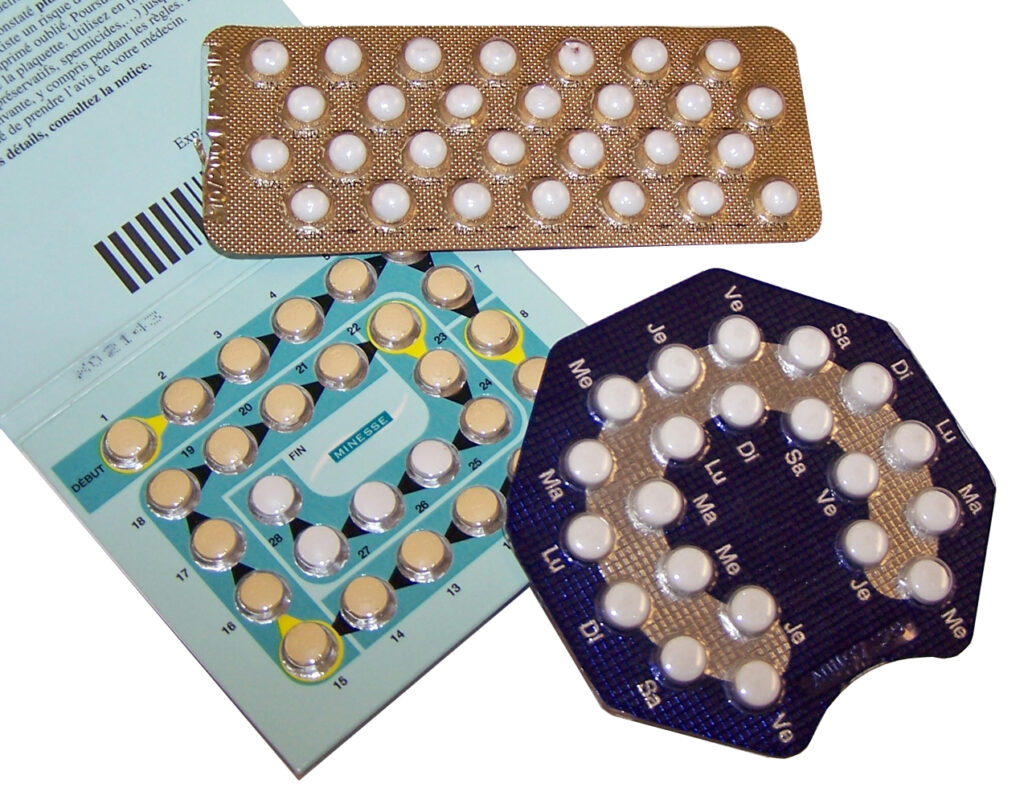
Dr. Sophia Yen, M.D., M.P.H., CEO and co-founder of Pandia Health, recently sat down with Ms. to discuss contraception access in an age of women’s health defined by the precarity of Roe v. Wade.
Here are 10 pieces of crucial information Yen shared about pregnancy prevention, emergency contraception and periods:
1. To get contraception, you don’t need a pelvic exam, a pap smear or STI testing.
While some physicians may insist on these requirements for their own benefit, they are not medically necessary in order to get contraception.
- Pelvic exams are only necessary if an individual is experiencing unusual discharge or abdominal pain.
- Routine pap smears typically occur beginning at the age of 21 or when sexual activity begins.
- STI testing starts around the age of 26, or, once again, when sexual activity begins.
While all of these health checks are good for maintaining reproductive and vaginal health, they are not necessary to begin birth control. Your doctor cannot hold your birth control hostage!
2. In total, there are 10 methods of birth control with varying protocols.
From most effective to least effective, they are as follows:
- Vasectomies, which, though they require a procedure, are minimally invasive and reversible if an individual decides they wish to have children.
- Implant/hormonal IUDs, which are inserted, and effective for three to seven years depending on the type of implant. Implants can be removed at any time at the patient’s request.
- Tubal ligation, which is a form of female sterilization that requires a procedure. This method is also reversible.
- Copper IUDs, which are non-hormonal and last 10 to 12 years.
- The contraceptive shot, which must be administered every 12 weeks.
- The ring, which must be re-administered either monthly or annually, depending on which product an individual decides to get.
- The patch, which must be reapplied weekly.
- The birth control pill, which must be taken daily.
- Condoms, which must be used each time an individual has intercourse.
- Withdrawal, which must be exercised each time an individual has intercourse.
- The fertility awareness method (FAM), which relies on monitoring an individual’s fertility patterns; must be tracked regularly/each time an individual wishes to engage in intercourse.
3. Non-patient controlled birth control is generally a safer option.
Patient-controlled birth control refers to any contraceptive which requires the patient themself to be in charge of monitoring and administration. These methods include the ring, the patch, the pill, condoms, withdrawal and FAM.
While these are most effective for some people who wish to take charge of their own contraceptive journey, potential risks of failure can be mitigated if the patient does not have to worry about continued administration on their own.
4. Birth control should come with no copay and no deductible.

Thanks to the health care and well woman provisions enacted through the Affordable Care Act, for individuals who have health insurance, there is no copay nor deductible for any birth control which has FDA approval. This approach helps to destigmatize contraception and reframe it as a critical part of health care, rather than a political or religious issue.
5. In terms of oral birth control pills, monophasic pill birth control is a better option than triphasic, and adolescents should have at least 30 micrograms or more of estrogen in their birth control pill.
Monophasic birth control works to maintain a smooth hormonal level, while triphasic birth control fluctuates hormone levels. There is no medical reason an individual taking birth control pills should have to have fluctuating hormone levels in order for the contraception to be effective.
Any less than 30 micrograms of estrogen has the potential to weaken bone density while a person is still growing. Once an individual reaches the age of 30, the amount of estrogen does not necessarily matter because they’ve already built up their bone density.
6. There are four methods of emergency contraception.
From most effective to least effective, they are as follows:
- Intrauterine devices (IUDs), which, as mentioned earlier, are devices that must be inserted into the uterine canal.
- Ella, which is a doctor-prescribed pill.
- Plan B, or any of its generic counterparts, which you can get at any pharmacy over-the-counter.
- Birth control pills, which should be initially taken four at a time after having unprotected sex. An additional four should be taken approximately 12 hours later.
7. Plan B is not as effective as it may seem.
Plan B and any of its other generic equivalencies are virtually ineffective for anyone whose BMI (body mass index) is 26 or over. Your BMI can be confirmed by using an online calculator. Consider this when assessing which emergency contraceptive method is best for your body and its needs.
8. You can and should get emergency contraception before you need it.
Yen uses a fire extinguisher analogy to explain this approach: If there is a fire, but someone already has an extinguisher, they have the power to prevent serious damage before it spirals out of control. If they are not prepared, then consequences may be more severe.
Similarly, sexually active individuals should keep emergency contraception on hand in order to take charge of their sexual lives in the case of an accident. This does not mean that emergency contraception should be your only course of action, but it should always be available as an option.
9. Check the expiration date on your emergency contraception.
Ask your provider for the furthest away expiration date on your emergency contraception. Otherwise they will likely assume you plan to use it that day and give you one which expires soon. Some emergency contraception can have a self-life for up to two years, however not after the date of administration.
10. Periods are optional.
The only reason those on birth control pills continue to bleed each month is because the first three weeks of the pill contain hormone levels, and the last week—sugar pills—drop these levels, despite there being no medical reason that an individual on birth control should have to have a period. Periods can be optional.
For those using hormonal birth control, not having a period is okay. In the absence of hormonal therapy, however, not having a period is a problem, and an individual experiencing this should reach out to their provider.
In the latest episode of the Ms. podcast “On the Issues With Michele Goodwin”—Sex Ed 101: The Talk You Wish You Got From Your Parents (with Kelly Davis, Dr. Fatu Forna, Mary Emily O’Hara and Jennifer Weiss-Wolf)—we talk about sex, periods, non-binary health care, maternal health, and what don’t we know or ignore about our own bodies.
Listen here:
Or head to the episode landing page for a full transcript, suggested background reading and more:
You may also like:





